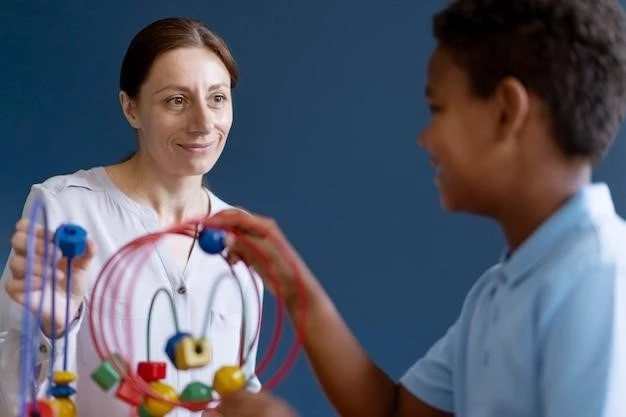Introduction to Seckel Syndrome
Seckel syndrome is a rare genetic disorder characterized by growth retardation, microcephaly, and unique facial features.
What is Seckel Syndrome?
Seckel syndrome, also known as bird-headed dwarfism, is a rare genetic disorder characterized by growth retardation, microcephaly, unique facial features, and mental retardation. It is an autosomal recessive disorder first identified by Seckel in 1960; The syndrome involves slow prenatal and postnatal growth, resulting in dwarfism and distinct facial abnormalities like a beaked nose and prominent eyes. Genetic mutations play a crucial role in the development of this condition.
What is Seckel Syndrome?
Seckel syndrome is a rare genetic disorder characterized by growth retardation, microcephaly, unique facial features, and mental retardation. It is an autosomal recessive condition involving slow prenatal and postnatal growth.
Characteristics of Seckel Syndrome
Seckel Syndrome, also known as bird-headed dwarfism, is a rare autosomal recessive disorder characterized by intrauterine growth retardation, dwarfism, microcephaly, mental retardation, and unique facial features like a beaked nose and prominent eyes. It is caused by mutations in different genes, contributing to the variability in symptoms among affected individuals.
Facial and Skeletal Abnormalities
Seckel Syndrome presents unique facial characteristics such as a beaked nose, prominent eyes, and a bird-like facial appearance. Individuals with the syndrome may also exhibit skeletal abnormalities, including micrognathia, low-set ears with hypoplastic lobules, and issues like premature closure of specific bones.
Genetic Aspects of Seckel Syndrome
Seckel syndrome is an autosomal recessive disorder caused by mutations in different genes, leading to various symptoms and characteristics.
Autosomal Recessive Inheritance
Seckel syndrome follows an autosomal recessive inheritance pattern, meaning that both parents must carry a copy of the mutated gene to pass it on to their child. The condition arises when the individual inherits two copies of the mutated gene, leading to the manifestation of Seckel syndrome’s characteristic features.
ATR Gene Mutation
The ATR gene mutation is responsible for causing Seckel syndrome, which is an autosomal recessive disorder. This mutation occurs on chromosome 3q23 and leads to the characteristic features of Seckel syndrome, such as severe microcephaly and proportionate dwarfism with unique facial characteristics.
Diagnosis of Seckel Syndrome
Diagnosing Seckel syndrome involves identifying characteristic features like growth retardation, microcephaly, unique facial traits, and mental disabilities. Genetic testing can confirm the presence of gene mutations associated with the syndrome.
Criteria for Identifying Seckel Syndrome
Diagnosing Seckel syndrome involves recognizing key features such as growth retardation, microcephaly, unique facial characteristics, and intellectual disabilities. Genetic testing can confirm mutations in associated genes.
Differential Diagnoses
When evaluating Seckel syndrome, differential diagnoses may include other forms of primordial dwarfism, microcephalic osteodysplastic dwarfism, and other syndromes with similar growth restriction, microcephaly, and unique facial characteristics. Genetic testing plays a crucial role in differentiating Seckel syndrome from other conditions with overlapping features.

Treatment and Management of Seckel Syndrome
Supportive care is crucial for individuals with Seckel syndrome, including regular monitoring, early intervention for developmental delays, and addressing specific medical issues that may arise. Various therapeutic approaches aim to enhance quality of life.
Supportive Care for Individuals with Seckel Syndrome
Providing supportive care for individuals with Seckel syndrome is essential, including regular monitoring, developmental interventions, and addressing any potential medical complications. Enhancing quality of life through specialized care is vital.
Therapeutic Approaches
Therapeutic approaches for Seckel syndrome focus on providing supportive care tailored to the individual’s needs. This may include developmental interventions, symptom management, and addressing associated health issues to improve overall well-being.
Prognosis and Complications of Seckel Syndrome
Individuals with Seckel syndrome may face long-term challenges due to the associated health issues. Understanding the potential outlook and managing complications is crucial for quality of life.
Potential Long-Term Outlook
Understanding the potential long-term outlook for individuals with Seckel syndrome is essential. Managing associated health issues and providing ongoing care can significantly impact the quality of life for affected individuals.
Associated Health Issues
Individuals with Seckel syndrome may experience additional health problems, including blood abnormalities and other medical issues that require proper management and treatment to maintain overall well-being. Regular medical monitoring is essential to address potential complications effectively.

Research and Developments in Seckel Syndrome
Ongoing studies and discoveries in Seckel syndrome aim to advance understanding of the genetic basis, associated health issues, and potential treatment options. Stay informed about the latest research developments for improved care.
Ongoing Studies and Discoveries
Continuous research into Seckel syndrome aims to enhance understanding of the syndrome’s genetic basis, associated health complications, and potential therapeutic advancements. Stay informed about the latest findings to benefit future treatment approaches.
Future Prospects for Treatment
Future treatment prospects for Seckel syndrome focus on advancements in understanding the genetic basis, innovative therapeutic options, and improved care strategies to address the complex needs of individuals with the condition. Stay informed on potential breakthroughs that may enhance treatment outcomes.
Support Resources for Individuals with Seckel Syndrome
Access reliable resources and support for Seckel syndrome. Stay informed about financial assistance, communication tools, and patient communities for guidance on managing this rare genetic disorder.
Assistance Programs and Organizations
Explore assistance programs and organizations dedicated to supporting individuals with Seckel syndrome. These resources offer valuable guidance, financial aid, and community connections to help navigate the challenges associated with this rare genetic disorder.
Accessing Information and Guidance
Find valuable information and guidance regarding Seckel syndrome through reliable sources and organizations. Stay informed about the latest updates, treatment options, and support services available for individuals and families affected by this rare genetic disorder.
Conclusion
Seckel syndrome, a rare genetic disorder with distinctive characteristics, requires understanding, support, and ongoing management. By utilizing resources, staying informed, and accessing appropriate care, individuals with Seckel syndrome can navigate the challenges effectively.
